Different Kinds of Moles Pictures
Melanoma Images: How to Try to Spot Melanoma
Below you can see six images of the most common type of melanoma, known assuperficial spreading melanoma.
The pictures in this article were licensed from DermNet NZ.
See more images (graphic imagery).
Confoundedly, not all suspect lesions that are later diagnosed as melanoma had the characteristics seen in these melanoma images.
To help we have created a 'walkthrough' of the principal differences between common moles and melanomas.

Melanomas may not always resemble a mole. They may look like theamelanotic (i.e.not brown, grey, bluish or black, but flesh-coloured, pink or red) melanoma shown below.
If you find something that resembles this on your skin, it is very possible it isnot a melanoma, but it's best to get it checked out without delay.
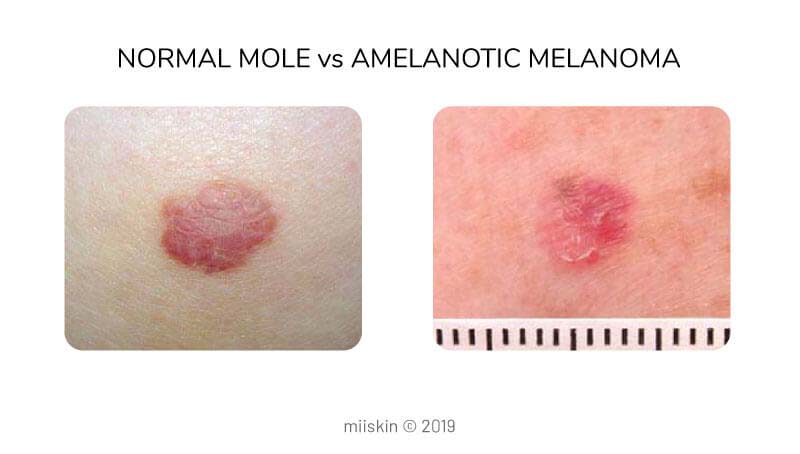
See more images (graphic imagery).
MIISKIN PROMO
Tracking your moles for changes?
Miiskin helps you routinely take full-body photos and close-ups of moles to look for new or changing moles and marks.

Remember the ABCDs
You may have heard about the ABCD of suspicious lesions, which aims to characterise signs of skin cancer. Below, you will find a comparison between normal moles and photos of melanoma based on the ABCD.
A for Asymmetry – The two halves of the mole do not match:
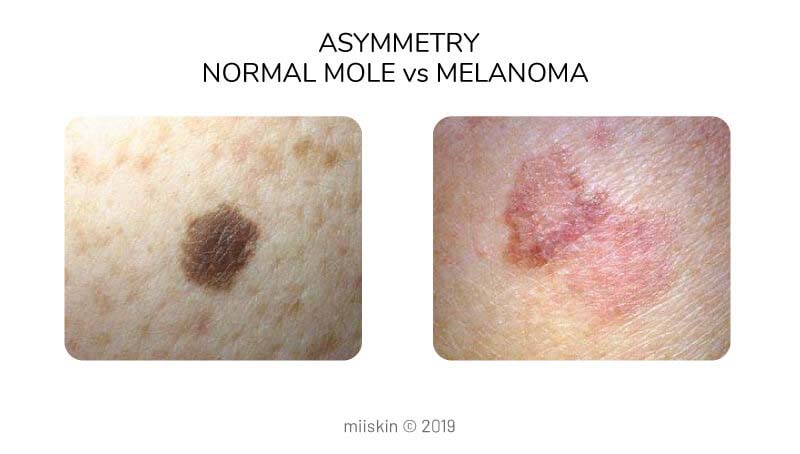
B for Border – The border is jagged or rugged:
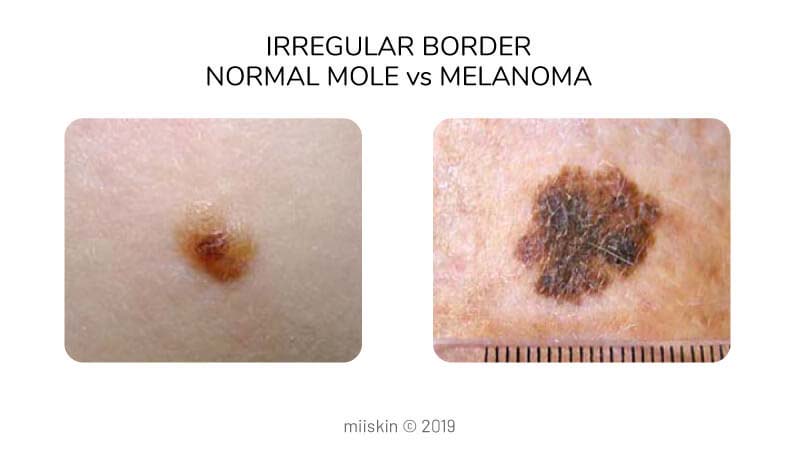
C for Colour – There are multiple colours or it changes in colour:
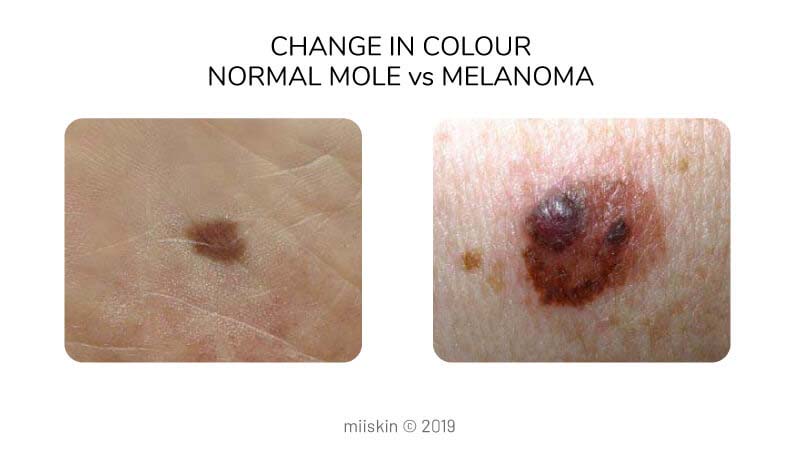
D for Diameter – The lesion is larger than a pencil's width:

See more images (graphic imagery).
The ABCD criteria are useful. However, if you have a mole that shows one or more of these characteristics it may be what is known as anatypical mole (naevus) which can resemble a melanoma in appearance.
If you have a few moles that fit the ABCD criteria, you should consider mentioning them to your GP, even if you are not worried.
Your GP may then either recommend a course of action or simply reassure you not to worry and keep an eye on them to watch for any changes. It is worth knowing that e.g in England your GP can refer you as an 'urgent suspected cancer' case and you will have to be seen by a Specialist in two weeks.
Atypical Moles
Here are someimages of atypical moles. They were examined by a Dermatologist whose opinion was that they should be removed but were later diagnosed under a microscope (histology) to be non-cancerous, i.e. not melanoma.
Atypical moles:
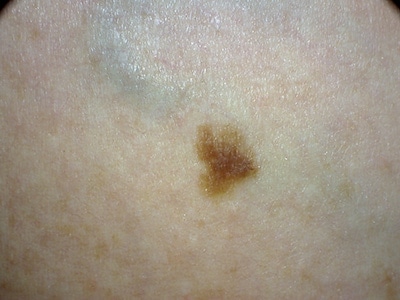
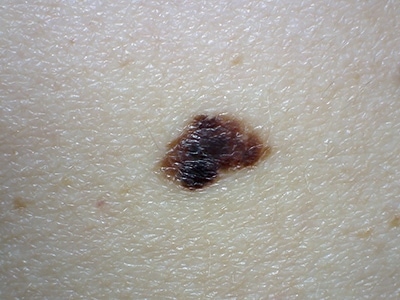
To find out more about atypical moles and see more images, read our detailed guide on atypical moles.
Ugly Ducklings – Any Spot That Doesn't Look like the Others
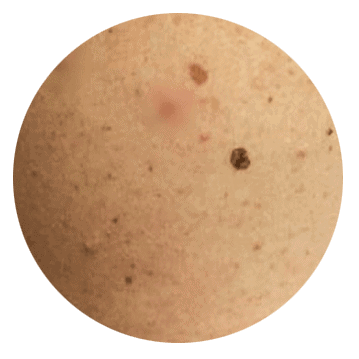
Here is a photo of anearly stage melanoma which visually stood out from the patient's other moles – it just looked different.
This is known as the 'Ugly Duckling' sign, and is an important clue to look out for.
Melanomas Can Appear in Unlikely Places
A person's common overall melanoma risk factor is influenced by UV exposure during their lifetime. Most melanomas therefore appear in places exposed to sunlight or UV rays from artificial tanning beds. However, this is not always the case.
You should also be aware of symptoms of melanoma under your nails, on the palms of your hands and on the soles of your feet. Remember also to inspect your scalp and back, when checking your skin, as these places are often ignored. Engage a family member, partner or friend to help you.
Read about the different signs and symptoms of melanoma.
Melanoma

Melanoma on foot
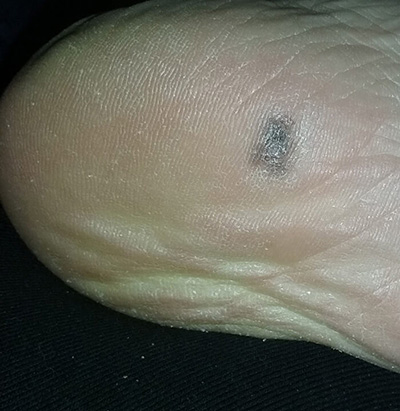
Something New or Something That Changes or Grows
Melanomas don't always look like the melanoma pictures shown in this article
You should always consult a doctor if you are in any doubt and build up an awareness of your skin's usual appearance so you can effectively check for new or changing lesions.
Baseline images of your skin and moles taken and held on a mobile device can assist you; try to compare your skin with the baseline on a monthly basis and look out for new or changing moles; recruit a family member, partner or friend to help you. Or use a smartphone app that can assist you in the skin check process.

A growing and changing lesion – for illustrative purposes.
How Can You Tell If a Spot Is Melanoma? See your Doctor
If you are concerned about a mole or mark on your skin and have not had it examined by a doctor, the only safe thing to do is to make a doctor's appointment and have it checked out.
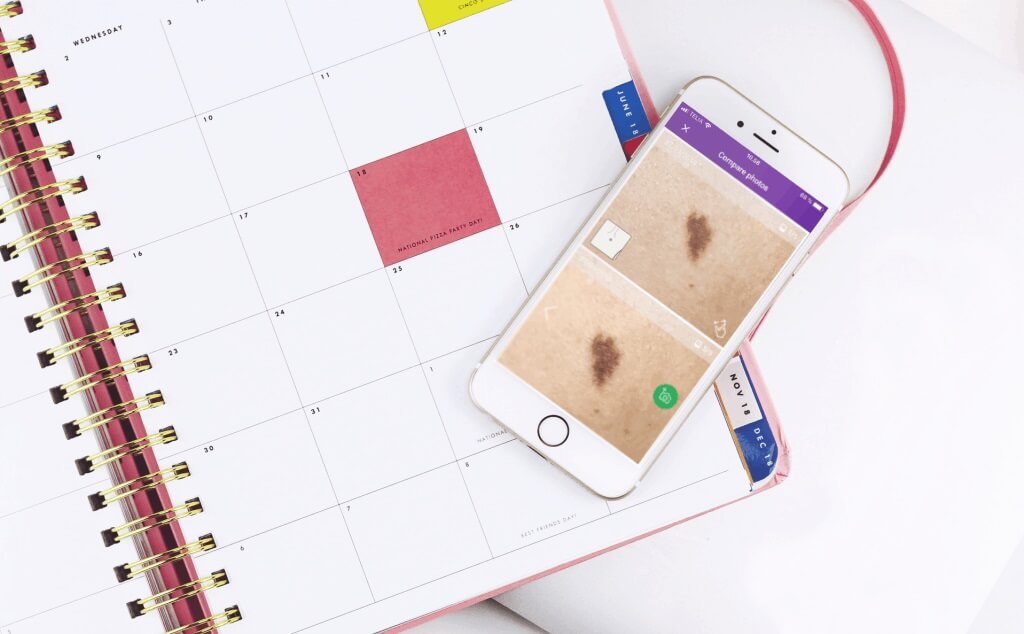
Your doctor may inform you that you should just keep an eye on it and report back if you notice any changes.
In this case, you can ask your doctor whether tracking the lesion and the rest of your skin with photos is something they would recommend.
Different Kinds of Moles Pictures
Source: https://miiskin.com/melanoma/melanoma-pictures/